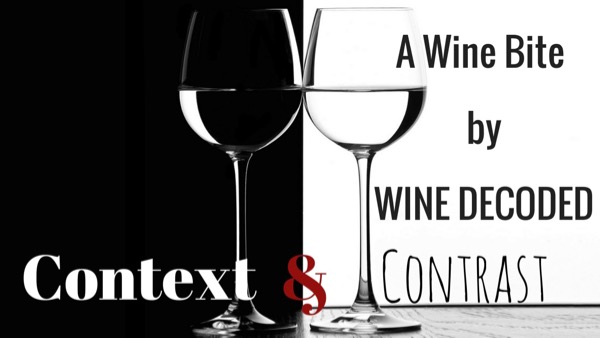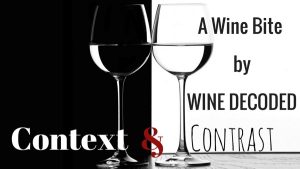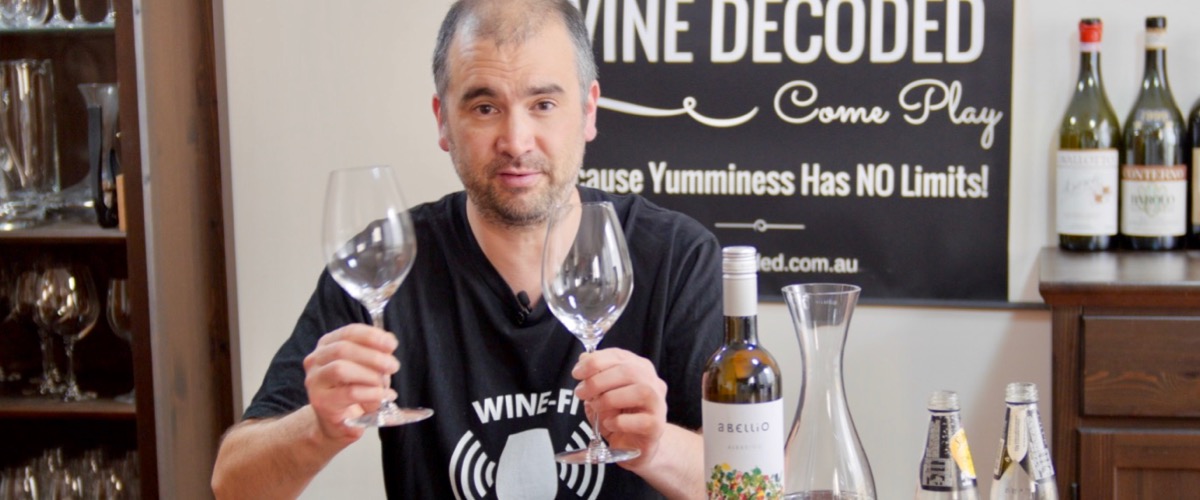Leave a Comment or Ask a Question!
The Reality: Wine is Complicated!
We’re going to make it as simple as possible without making it too simple!
If you’re just starting or have been devouring exceptional wine for decades this series is for you. By the time you’ve finished, you’ll be armed with all you need to taste and enjoy drinking wine.
If you’ve been at it for while you’ll get to tune up your palate and perhaps look at wine with fresh eyes!
We’ve overcomplicated wine. There are too many words that just don’t make sense.
Sure, it’s like anything, you do need to get the basics.
It’s really much simpler than we make it!
We’re going to demystify it:
- Crawl before you can walk and then become a superhero … whatever that is for you.
- The wine world tends to overcomplicate wine. It’s not rocket science.
We’re going to help you:
- Learn the basic wine language.
- Over time and it does take time and lots of tasting (hey some one’s got to do it) we’ll help you develop a central reference in your brain for what actually makes truly yummy wine.
Welcome to our “Tasting Revolution”!
It’s not really a Revolution, more a case of Back to the Future before all the guff came into the game.

Free to Wine Decoded Members, over 5 short, interactive session we’ll explain the 5 things you need to know to taste wine.
Here at Wine Decoded, we don’t believe in watching people taste wine. You’ll only have fun if you’re tasting wine! Each session we’ll set you up to taste wines giving you real-world experience to make it easier to understand what we’re talking about. You’ll be able to use wine you’ve got around the house, or, preferably you can buy some from us! 😉
Our approach is based on over 25 years of experience with wine, 15 years making it, a degree in Winemaking, completing the invite-only Advanced Wine Assessment Course targeted at Wine Show Judges and tasting 10,000’s of wines from around the world.
This is not about marketing, this is about delicious wine. You won’t find any “High Pixel Tannins” or “Scent of a Siberian Hampster” here!
By the time you’ve finished, you’ll be tasting wine using the same technique we use when ploughing through the 1,000’s of wine we taste to find delicious wines to put in the Wine Decoded Wonderland.
To help you remember, while you practice “Wine Tasting” we’ll send you our Wine Decoded Tasting Revolution card with your first order!


What we are not going to do
- These sessions won’t directly include wine faults and flaws. We’ll save those for another time.
- It’s more important that you look for the good things about wine first!
In this Wine Bite
We’re exploring the benefits of tasting with Context and Contrast and we’re covering the first two things to look at when you’re trying to work out whether a wine is any good.
Depth or Body and Length also known as Concentration and Persistence.
Things you’ll need
At least 2 wine glasses. 1 Bottle of dry (no sugar in it) white wine & YOU!
Tasting with Context and Contrast

- The best way to learn is to taste in context and with contrast.
- Need to taste at least two wines at a go to give you contrast.
- Allows you to compare and you’ll find yourself saying, this one’s sweeter, this one oakier, this one’s smoother, this one’s fresher.
- That’ll speed up the time it takes for you to understand some of the 5 elements of tasting wine and learn more about wine.
- Having a theme or context is not always essential but can help you get more from a session.
- Taste with someone that knows more than you, it’s the best way to learn and get your head around wine, join us in a Wine Bite (LINK)
Depth & Length
 I want you to grab 2 glasses. Remember I talked about tasting in contrast and with context, well today we’re going to be tasting 2 wines with different Depth/Concentration and Length/Persistence.
I want you to grab 2 glasses. Remember I talked about tasting in contrast and with context, well today we’re going to be tasting 2 wines with different Depth/Concentration and Length/Persistence.
Now for the contrast.
In your first glass pour some of your wine. Enough to allow you to taste it a few time 75mls or so.
In your second glass pour in about half the amount of wine and make it up to the same volume with water, yup, that’s right, water and give it a swirl to mix it.
Time to taste! Here’s the obligatory how you taste wine thing. We’re not going to go through all the 9 elements today, we’re just going to focus on depth and length.
- Look at it. Mostly your just looking for clarity, to see if it is cloudy, hazy, murky or if there are any bubbles in it. Don’t stress too much as long as it looks clear and hasn’t gone brown! We’ll cover clarity more over time.
- Swirl it to free the aroma from the liquid.
- Sniff it real good, your brain uses smell to help it work out the flavours.
- Listen to it (JOKING)
- Taste it, take a decent swig, swish it all around your mouth. Some people like to suck a bit of air through the wine to help liberate the flavour and aroma (it goes up the back of your nose too!).
- Not essential, but, swallow it.
Now we’ve covered that, I want you to just smell each wine and focusing on the intensity of the aroma. Make sure you give\ each glass a good swirl before you smell it and take a few moments between each glass.
Compare them: Does one seem more concentrated than the other? If yes, which one.
Now taste them, this time both smell and taste each glass.
Start with the one with no water added.
I want you to think about the concentration of flavour, the depth. Try and remember what you’re tasting. Focus on the front, middle and back of your tongue.
Have a rest for 5-10 seconds.
Now taste the second glass, the 50:50 wine/water one. Take your time, again thinking about the concentration of flavour, the depth.
Notice just how watery it is by comparison. The flavours are weak and diluted, lacking concentration and depth.
Boom! You have Concentration covered. The straight wine whatever it is should appear to be pretty normal. The water mix wine not so good, weak, watery, lacking flavour.
When you’re looking at concentration remember this! You can always repeat this little experiment to remind you of the difference.
Over time, as you taste more and more wine you’ll calibrate your taste buds to work out what good levels of concentration are.
Why is Depth / Concentration so important?
In the end if the wine doesn’t have enough concentration it’s kind of like having decaf or eating carob instead of chocolate, it’s just a pale representation of the real thing!
Length / Persistence
Now repeat the exercise starting with the straight wine. This time focus on how long the flavours last / persist after you’ve swallowed the wine. Do they disappear straight away, last for a little while or last forever.
Have a rest for 30secs.
Taste the watered down wine again focusing on the flavours after you’ve swallowed the wine. Notice how much faster they disappear.
Why is Length / Persistence so important?
It’s all really about yumminess. If it tastes good you want the flavours to last for longer so you can enjoy them!
If they just disappear straight away you are not getting great bang for your buck. You just keep having to guzzle a wine to get satisfaction.
Summing up
So today, we’ve demonstrated the benefit of tasting in context and with contrast. If you want to get the most out of tasting wine taste with Context and Contrast. Yeah, it requires opening more that one bottle at a time, but, hey it’s an excuse to invite friends around. Don’t forget our tips on saving wine from the drain!
We’ve learnt the basics of how to taste a wine and we’ve explored the 1st of 5 things you need to know to work out if a wine is yummy: Depth / Concentration and Length / Persistence.
When you’re thinking about Depth / Concentration ask yourself:
- How intense is the flavour at the front, middle and back of my tongue?
- Is it the same along the full length of my tongue or does it seem a little watery in some parts compared to others?
- Does it have a lot of depth or seem really thin and watery?
When you’re thinking about Length / Persistence ask yourself:
- Do the flavours linger in your mouth forever after you’ve swallowed? Sign it’s probably a pretty bloody good wine?
- Do the flavours linger for a bit? It’s probably a decent wine?
- Do the flavours disappear as soon as you’ve swallowed it? It’s probably not a great wine. Look elsewhere for yumminess.
In the next Wine Bite:
Next session we’ll be looking at Balance and Complexity.
Things you’ll need:
For the next session make sure you have:
- A bottle of white wine on hand. Preferably a dry wine, meaning it is not sweet and doesn’t have any sugar in it. You’ll beed 300ml per person.
- Some plain old white sugar.
- A pack of citric or tartaric acid – you can get it in the baking aisle of most supermarkets.
- A bit of vodka – doesn’t have to be good. You’ll only need about 10mls per person.
If more than one person is playing make sure you have at least 300mls of each wine per person.
Make sure you have at least 2 wine glasses each, 4 would be better.
A little preparation for a future session:
You have a little preparation to do for a session later in the series. We demonstrate the steps towards the end of the video above.
- Grab a bottle of wine. Make it something young, no more than a couple of years old. If it’s a white get a dry (no sugar in it) wine. FYI – You will be sacrificing about 100mls of it for a good cause!
- Grab two small glass container or bottle (a tonic or dry ginger bottle would work) make sure they’ll hold at least 200ml.
- Make sure they’re clean, dry and don’t smell!
- Open your wine taste it (because you should)
- Fill one of your glass containers full to the brim, make sure there is as little air in it as possible even if you have to spill some to make it happen!
- Fill the other one about a third to half full and shake it for 10 seconds.
- Now go put them somewhere safe and forget about them until we’re reading to use them.
- Enjoy whatever is left of your bottle of wine.
- If you want to go all out do it with both a white and a red.
If more than one person is playing make sure you have at least 50mls of each wine per person.
Share your thoughts
Got a question? Have some feedback? Leave a comment below, let us know what you’re hoping to get from these sessions, what you’ve been drinking that you’ve enjoyed or ask a question. We’d love to hear from you.

You must be logged in to post a comment.